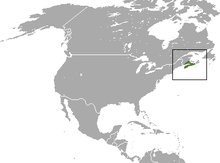
The smoky shrew is a medium-sized North American shrew found in eastern Canada and the northeastern United States and extends further south along the Appalachian Mountains.

The Gansu shrew is a red-toothed shrew found only in a small part of Gansu province and other adjacent areas of China. With its very limited range, it is sensitive to habitat loss and is listed as a "vulnerable species" in the Chinese Red List, while the IUCN lists it as being "data deficient"
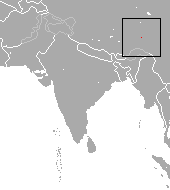
Kozlov's shrew is a red-toothed shrew found only at the Mekong River, Tibet, China. It is listed as a data deficient species.

The Tien Shan shrew is a species of mammal in the family Soricidae. It is found in China and Kazakhstan.

Baird's shrew is a species of mammal in the family Soricidae. It is endemic to northwest Oregon. Baird's shrew inhabits moist conifer forests.
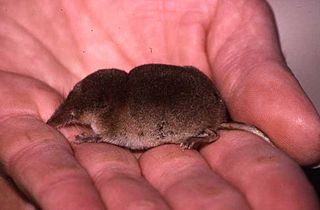
The crowned shrew or Millet's shrew is a species of mammal in the family Soricidae. It is found in Austria, Belgium, France, Germany, Liechtenstein, the Netherlands, Spain, Switzerland, and the British island of Jersey. It is almost indistinguishable from the common shrew, its habitatal preferences and habits are identical. However it has a different karyotype, is slightly smaller, and has small morphological differences, such as a longer rostrum relative to length of skull.

The Chinese highland shrew is a species of shrew in the family Soricidae. It is found in China.

The Azumi shrew is a species of mammal in the family Soricidae. It is endemic to Japan, where it is found in the mountainous regions of central Honshu Island. It is a close relative of the Eurasian least shrew. It is threatened by habitat loss.

The Saint Lawrence Island shrew is a species of mammal in the family Soricidae. It is found only on Alaska's St. Lawrence Island.
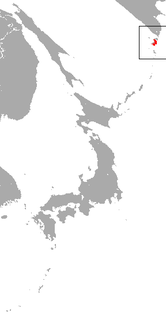
The Paramushir shrew is a species of mammal in the family Soricidae. It is endemic to Russia. Its natural habitat is temperate forests. It is likely named for Paramushir Island, home to several other species of shrew in the genus Sorex.

Portenko's shrew is a species of mammal in the family Soricidae that is endemic to Russia.

Radde's shrew is a species of mammal in the family Soricidae. It is found in Armenia, Azerbaijan, Georgia, Russia, and Turkey.

The Apennine shrew is a species of shrew in the family Soricidae. It is endemic to Italy.

The Caucasian shrew is a species of mammal in the family Soricidae. It is found in Armenia, Russia and Turkey.
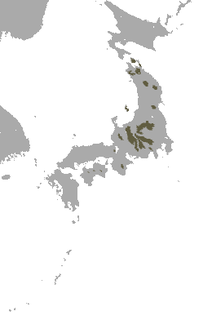
The Shinto shrew is a species of shrew of the genus Sorex that lives only on the islands of Japan. It is a mole-like mammal with a pointed snout, very small ears, and a relatively long tail. Like most shrews, it is tiny, has poor eyesight, and a very good sense of hearing and smell which it uses to locate its prey, mainly insects.

The Chinese shrew or dusky shrew is a species of mammal in the family Soricidae. It is endemic to China, where it occurs in Gansu, Sichuan, and Shaanxi. Its natural habitat is subtropical or tropical dry forest.

The San Cristobal shrew is a species of mammal in the family Soricidae. It is endemic to Mexico. It is known only from the Huitepec Ecological Reserve west of San Cristóbal de las Casas in the Chiapas Highlands of central Chiapas. It is found at 2,743 m (8,999 ft) elevation in montane cloud forests.

The Inyo shrew is a species of shrew found in the western United States. Not much is known about its behavioral and reproductive habits. It is small, very similar in appearance to the related dwarf shrew, but smaller and paler. It can be found in many different habitats, from rocky, mountainous regions to wetlands and riparian areas. While barely studied, their population is believed to be stable and not under any threat.

The Tibetan shrew is a species of mammal in the family Soricidae. It is found in western China.
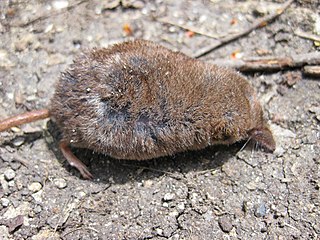
The Caucasian pygmy shrew or Ukrainian shrew is a species of mammal in the family Soricidae. It is found in Armenia, Azerbaijan, Georgia, Russia, Ukraine, East Azerbaijan Province in Iran, and Turkey.
